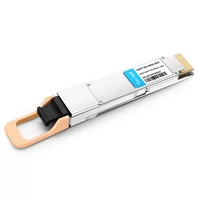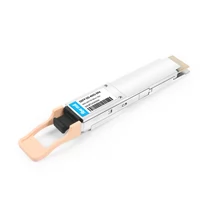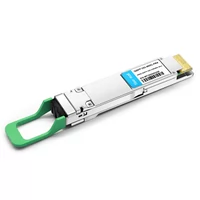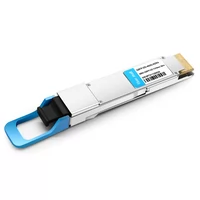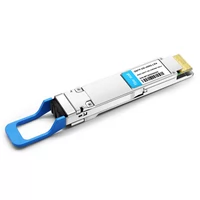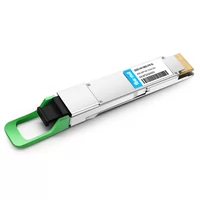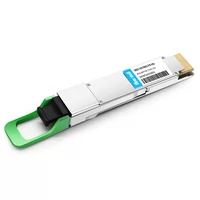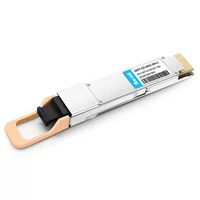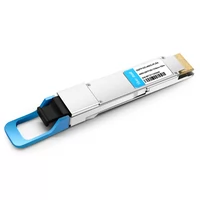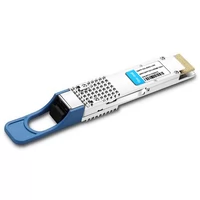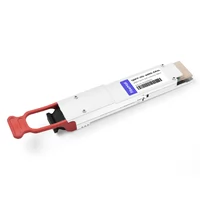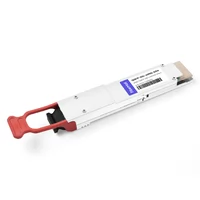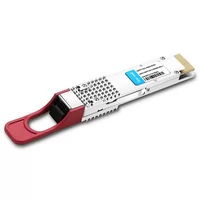The fast development of networking technology has required faster and more efficient processing to deal with the increasing volume of data traffic. The switch to 400 Gigabit Ethernet (400GbE) in the current network infrastructure is key due to organizations’ increased use of bandwidth-intensive applications. This report considers many aspects surrounding 400GbE, such as its technical foundations, what it means for performance and design across networks moving forward, etcetera. With this all-inclusive account of about four hundred gigabit Ethernet, people can understand more clearly how these technologies work together, connecting everything better than ever before, especially when dealing with digital transformation challenges today.
Table of Contents
ToggleWhat is 400G Ethernet?
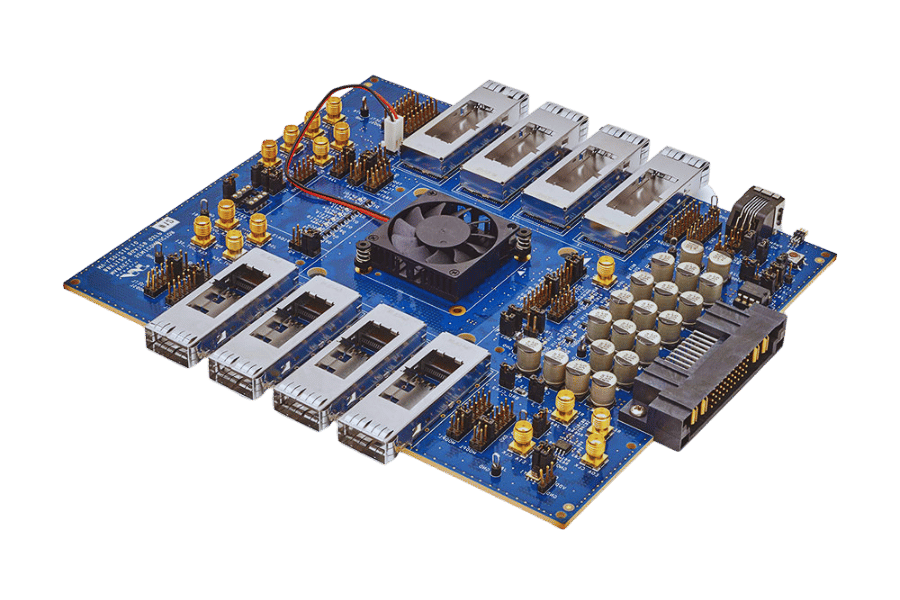
Understanding 400GbE Technology
400GbE (Ethernet) is a great leap forward in data transmission technology; it has been designed to cope with the ever-increasing bandwidth demands of today’s highly advanced data centers and high-performance computing environments. It capitalizes on multiple modes of transmissions cored around four lanes of 100 GbE, which work concurrently, or single-lane transmissions that are based on coherent optics. This means that not only does this new tech enhance throughput, but it also saves power compared with other methods while still being compatible with current Ethernet standards. With more advanced modulation methods and denser transceivers, it allows for the smooth transfer of information over wider networks so that establishments can keep up with their rapidly changing digital environment needs.
Key Benefits of 400G
The use of 400 Gigabit Ethernet (400GbE) has several advantages which are important for better network performance and operational efficiency.
- More Bandwidth: This technology allows organizations to achieve much higher data transfer speeds. It therefore provides faster application and service access — a necessary requirement for cloud computing as well as data-intensive activities.
- Cost-effectiveness: Enterprises can save on equipment costs by integrating multiple connections with lower speeds into one 400GbE link. In addition, power consumption will be reduced while space requirements within data centers minimized.
- Scalability: The ability of 400GbE to handle increased network traffic without requiring complete replacement of existing infrastructure makes it future proof hence suitable for scalability.
- Compatibility: New technologies can be incorporated into current setups because 400GbE is backward compatible with previous Ethernet standards.
- Better Performance: Coherent optics among other advanced features used in this technology enhance data integrity and reduce latency thereby improving performance especially in high-performance computing applications.
Therefore, these benefits make 400 Gb/s Ethernet an essential part of the development process for modern networking architectures that can deal with challenges posed by an increasingly connected world.
Applications in Modern Networking
400 Gigabit Ethernet (400GbE) has become more valuable in many areas of modern networking due to its capabilities. Here are a few major use cases:
- Data Centers: In data centers, 400GbE allows for much faster transfer speeds between servers as well as storage systems and network switches, thus supporting large-scale virtualization and big data analytics.
- Cloud Services: With the growth of cloud computing, 400GbE makes it possible to move data quickly between user endpoints and cloud services, which greatly improves performance for users who rely on bandwidth-intensive applications like content delivery networks (CDNs), video streaming platforms or ERP systems.
- Telecommunications: Core networks and edge locations within telecommunication infrastructures need higher throughput through 400 gigabit Ethernet links where they can handle heavier traffic loads brought about by larger subscriber bases that come with new services such as 5G mobile connectivity among others.
- High Performance Computing (HPC): During this period where computation is expensive in terms of time taken per operation; HPC environments use 400 Gb/s Ethernet technology for connecting different compute clusters together within same rack cabinets or even across multiple racks but near each other so that they have low latency access between one another hence enabling fast simulations based on huge volumes of scientific data collected over long periods from various sensors worldwide including those deployed under oceans etc..
- Network Backbones: As internet traffic continues to increase exponentially year after year; service providers must adopt these new technologies i.e., 400G Ethernet ports at their core routers which should be able to forward packets efficiently over very long distances while still meeting anticipated future growth rates with respect to bandwidth demand especially considering content being delivered via CDNs whose popularity is growing rapidly.. thus leading into wider adoption than ever before seen throughout industry history thereby creating challenges associated with global routing tables among others.
The above usage scenarios show how four hundred Gbps ethernet not only satisfies current needs but also positions networks towards adapting themselves to changes within digital communications as well as data processing landscapes.
How Does 400G Ethernet Enhance Data Centers?
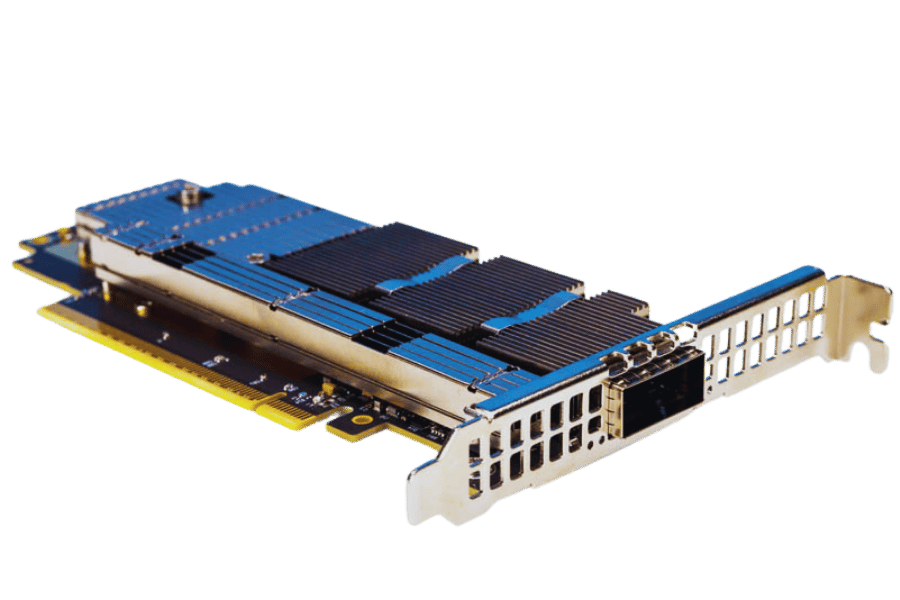
Boosting Data Center Throughput
Sophisticated signaling methods and data transmission technology allow 400GbE to multiply a data center’s throughput by five. It can do this by facilitating information transfer through high-capacity channels. By consolidating many data payloads into one with the help of optical fibers and cutting-edge connectors, 400GbE reduces the number of physical connections required thus minimizing latency while also increasing energy efficiency across the board in DC operations. Moreover, it enables us to aggregate many 100 GbEs or 10 GbEs into a single 400 GbE, which optimizes bandwidth utilization that, in turn, ensures smooth scalability needed for coping with surging data traffic demands, hence improving performances on applications requiring fast processing speeds within data centers, leading to enhanced user experiences as well as operational efficiencies.
400GbE in Machine Learning and AI
In AI or ML environment, the introduction of 400GbE is important because it can deal with large datasets and also allow for real-time processing. The fact that machine learning models need more computational power and higher data throughput makes 400GbE vital as it provides enough bandwidth to transfer training information quickly without any delays caused by latency. This becomes very essential in deep learning where many GPUs and compute nodes are connected together through fast interconnects so as to reduce processing time while improving model performance.
Additionally, this technology supports more complex systems like distributed computing architectures or cloud-based machine learning platforms, which foster collaboration among different resources, hence making them work efficiently together. With such a scalable infrastructure in place, organizations can speed up their AI efforts using 400 Gb Ethernet, thus enabling quicker experimentation, iteration, and deployment across various industries of artificial intelligence-driven solutions. In this way, not only immediate data transfer requirements are met, but also opportunities for future developments within intelligent computing are created by integrating four hundred gigabit Ethernet into ML frameworks alongside other AI technologies.
What Are the Key Components of 400G Ethernet?
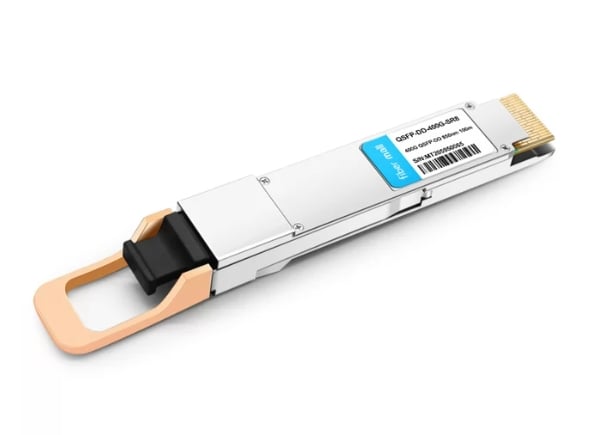
Introduction to QSFP-DD Modules
Quad Small Form-factor Pluggable Double Density (QSFP-DD) modules are a transceiver for 400G Ethernet networks. These help send fast data. QSFP-DDs comply with dual-density connector technology, meaning they can double the rate of existing QSFP standards. They are made in such a way that they can handle multi-mode and single-mode optical signals, which enable them to be utilized in different network settings such as data centers, enterprise networks, or high-performance computing environments.
The main features of QSFP-DD modules include support for up to 400 Gbps aggregated bandwidths, less energy consumption compared to the previous generation modules and backward compatibility with already existing QSFP interfaces. Moreover, they have been designed with better cooling abilities, ensuring optimal performance even when used within densely populated racks.
With more and more organizations adopting high-speed networks every day, the need for QSFP-DD standards becomes inevitable, if not mandatory, for next-gen applications’ requirements satisfaction, scalability, and flexibility assurance, as well as promoting effective operations of data centers.
The Role of PAM4 Modulation
Pulse Amplitude Modulation 4 (PAM4) is a key technology for 400G Ethernet, which greatly increases data rates over existing systems. Binary modulation uses only two levels of amplitude to transmit data, but PAM4 has four distinct levels that can represent two bits of information in one symbol. This means that within the same bandwidth, this innovation doubles the amount of data that can be sent through it and, therefore, becomes an essential part of any solution designed to cope with the ever-increasing demand for bandwidth in data centers and high-performance computing environments.
The use of PAM4 modulation is particularly useful for cloud computing, data analytics, and streaming services, where speed and efficiency are critical requirements. However, its implementation comes with some challenges, including higher noise susceptibility and lower signal integrity, though these problems have been addressed through refined error correction methods alongside more advanced digital signal processing (DSP) techniques to ensure reliable performance even under such conditions. As the industry moves towards faster networking solutions, PAM4 modulation will remain fundamental in enabling successful deployment and scaling up of 400G Ethernet infrastructures.
What is the Evolution of Ethernet Standards?
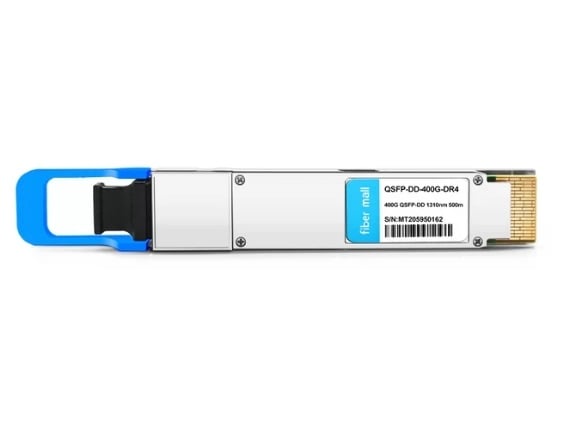
From 10Gbps to 400Gbps: The Journey
Ethernet standards have evolved in a series of amazing developments in data transmission speeds from 10Gbps to 400Gbps. Originally created around the early 2000s, the 10 Gigabit Ethernet (GbE) standard significantly improved high-speed networking applications for data centers. The Institute of Electrical and Electronics Engineers (IEEE) then came up with 40G and 100G Ethernet standards as demand for greater bandwidth grew, allowing for increased data transmission rates while remaining backward-compatible with existing infrastructure.
In 2017, IEEE ratified the 400 Gigabit Ethernet — or IEEE 802.3bs — which represented a big jump forward in terms of faster speeds needed to support new applications such as cloud computing, big data analytics, and high-definition video streaming. This standard uses several technologies like PAM4 modulation, multi-lane transmission schemes, and improved optical interfaces — QSFP-DD and OSFP — that enable network operators to maximize their physical infrastructure efficiency. As businesses continue dealing with more data and going through digital transformation initiatives, the evolution of Ethernet helps ensure that networks can handle these future demands while enhancing overall connectivity.
Insights into IEEE 802.3bs Standard
The Ethernet landscape sees the IEEE 802.3bs standard as a game-changer because it is mainly designed to provide 400Gbps data rates through advanced technologies’ integration. This standard specifies many things, among them using PAM4 (Pulse Amplitude Modulation) to double the effective data rate over one optical signal. In addition to that, it includes multi-lane transmission techniques, which make it possible for information to be transmitted through multiple channels at once, thereby increasing throughput without having to change much on the existing infrastructure.
Moreover, this standard also defines optical interfaces like QSFP-DD (Quad Small Form-factor Pluggable Double Density) and OSFP (Octal Small Form-factor Pluggable), which are necessary in enabling high-density connections that save space within data centers while effectively dealing with increased amounts of data traffic. Additionally, IEEE 802.3bs standardizes the physical medium for 400G Ethernet, i.e., appropriate wiring and cabling systems are put into place so as to ensure compatibility between different vendors’ equipment as well as their deployment sites . All these features combine together to create a solid foundation for future networking solutions which can meet ever-growing bandwidth demand in current digital ecosystems where speed is everything
How to Implement 400GbE in Your Network?
Selecting the Right 400GbE Switch
To ensure compatibility and performance of 400GbE switches in your network, there are important things you need to put into consideration. Start by looking at port density that will allow you to connect many devices while saving space within the data centre. Secondly, evaluate supported optical interfaces such as QSFP-DD or OSFP modules which should be aligned with both current and future infrastructure upgrade plans.
Also, check for performance characteristics of the switch, like latency and throughput, because they directly affect how much data can be handled by it. You may need some features, including advanced Quality of Service (QoS) mechanisms that prioritize traffic in order to keep up performance during peak times, too. Still, on this point, also consider network management capabilities, which involve support for software-defined networking (SDN) as well as automation tools necessary for easy scaling up operations.
Finally look out for vendor support options plus warranty terms provided since reliable technical assistance with long term operational success might depend so much on them. These are some criteria through which an organization can choose a 400GbE switch that meets their needs while preparing for future challenges in networking environment.
Maintenance and Management Tips
To ensure the efficient operation and control of a 400GbE network, there are certain guidelines that should be followed. First and foremost is continuous monitoring of network performance; this can be done through the employment of tools for monitoring network performance, which helps in detecting real-time bottlenecks or anomalies, hence allowing for timely intervention. Equally important is the regular upgrading of firmware on all devices connected to the networks since these updates come with security patches as well as performance improvements that can fix bugs, plug loopholes, and enhance efficiency.
Also, it is advisable to create an active maintenance plan where inspections are carried out frequently while testing optical cables together with their connections so as to prevent them from becoming major problems later on. Besides this, documentation needs to be done about everything related to configuration settings made within networks, including any changes made over time, along with physical topologies used, because this will assist greatly during troubleshooting, especially when working in complicated environments.
Finally, staff training should be conducted based on features and functions specific to 400GbE technology so that maximum returns may be realized from infrastructure investments while at the same time equipping every member with skills necessary for effective management of large capacity networks in organizations. In conclusion, by following these steps, businesses will have reliable and high-performing 400 Gb Ethernet networks that can keep up with their changing demands.
What are the Future Developments in 400G Ethernet?
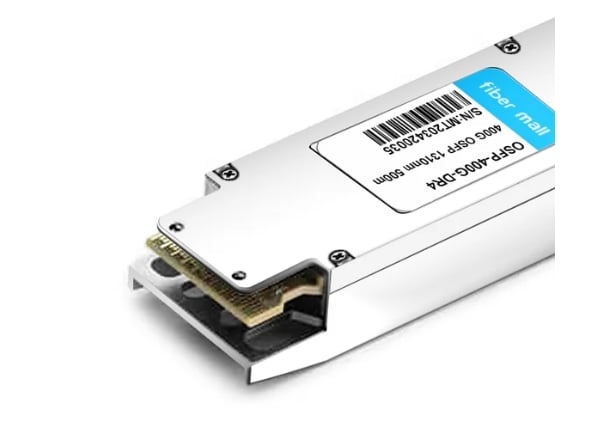
Why 400G Ethernet is Critical for Modern Networks
The exponential growth of data traffic is reshaping the networking landscape. From streaming ultra-high-definition content to processing AI-driven workloads, modern applications demand robust infrastructure. Here’s why 400G Ethernet is a game-changer:
Unprecedented Speed and Bandwidth: At 400 Gbps, 400G Ethernet supports rapid transfer of large datasets, making it ideal for data-intensive applications like machine learning and big data analytics.
Cost Efficiency: By consolidating multiple lower-speed connections (e.g., four 100G links) into a single 400G port, organizations reduce hardware costs and simplify network architecture.
Energy Efficiency: A single 400G port consumes less power than multiple 100G ports, lowering operational expenses and supporting sustainability goals.
Scalability: 400G Ethernet enables flexible network designs, allowing businesses to scale capacity without overhauling existing infrastructure.
Low Latency: Critical for real-time applications like financial trading and autonomous vehicles, 400G Ethernet minimizes delays in data transmission.
Next-Generation Data Center Networking
To meet the needs of larger data workloads, next-generation data center networking calls for increased bandwidth, lower latency, and improved network efficiency. Among other things, this is being done through such technologies as 400G Ethernet, which allows for higher capacity and performance to deal with massive amounts of information produced by AI (Artificial Intelligence), cloud computing and IoT (Internet of Things) devices. Moreover, software-defined networking (SDN), together with network functions virtualization (NFV), among other innovations, enable flexibility as well as scalability, thereby facilitating simplified management through dynamic resource allocation where necessary within these centers for data processing. With advanced optical technologies becoming part and parcel of these centers coupled with AI-driven automation systems, they will become more resilient operationally while reducing operational costs, thus meeting current business needs.
Emerging 400G Solutions and Trends
New concepts in 400G Ethernet are about boosting performance and simplifying network architectures. They have to do with using coherent optics that improve signal integrity over long distances among other things. Another thing is integrating more advanced multiplexing techniques so as to maximize bandwidth efficiency. Centralized and distributed fiber optic networks are also becoming more widespread, which allows for higher-density deployments necessary for data center scalability. Progress made in silicon photonics technology has helped cut down expenses as well as power consumption while at the same time increasing data transmission rates. In general, these changes make it possible for businesses to effectively utilize 400G Ethernet which ensures that they are prepared for future bandwidth requirements.
Core Technologies Behind 400G Ethernet
The leap to 400G Ethernet is made possible by several innovative technologies that enhance performance, reliability, and efficiency. Below are the key components driving this standard:
1. Pulse Amplitude Modulation (PAM4)
Unlike the Non-Return-to-Zero (NRZ) modulation used in 100G Ethernet, 400G Ethernet employs PAM4, which encodes two bits per symbol, effectively doubling the data rate within the same bandwidth. This allows 400G Ethernet to achieve higher throughput without requiring significant increases in physical infrastructure. However, PAM4 is more susceptible to noise, necessitating advanced error correction techniques like Forward Error Correction (FEC).
2. High-Density Transceivers
400G Ethernet relies on compact, high-performance transceivers such as QSFP-DD (Quad Small Form-factor Pluggable Double Density) and OSFP (Octal Small Form-factor Pluggable). These modules support multiple lanes of data transmission, enabling high-density connectivity in switches and routers. QSFP-DD, for instance, is backward-compatible with 100G QSFP28 modules, facilitating gradual upgrades. OSFP, designed for future scalability, supports even higher power and cooling requirements for next-generation speeds.
3. Dense Wavelength Division Multiplexing (DWDM)
For long-haul and metro applications, DWDM technology allows multiple data streams to be transmitted over a single fiber by using different wavelengths. Juniper Networks highlights the use of 400G QSFP-DD ZR+ modules, which support 100G/200G long-haul and 300G/400G metro applications, making 400G Ethernet viable for diverse network environments.
4. Forward Error Correction (FEC)
To maintain signal integrity at 400 Gbps, FEC is critical. It detects and corrects errors caused by signal degradation, ensuring reliable data transmission over long distances or in high-noise environments.
5. Coherent Optics
Coherent optics, used in 400G ZR and ZR+ modules, enhance long-distance transmission by improving signal detection and reducing power consumption. This technology is particularly valuable for interconnecting data centers across regions.
Applications of 400G Ethernet
400G Ethernet is transforming a wide range of industries by enabling high-speed, low-latency connectivity. Below are its primary applications:
1. Data Centers
Modern data centers rely on spine-leaf architectures, where high-speed connections between switches and servers are critical. 400G Ethernet reduces latency and increases throughput, enabling data centers to handle massive workloads efficiently. It also supports hyperscale environments, where cloud providers like AWS and Google manage petabytes of data daily.
2. High-Performance Computing (HPC)
AI, machine learning, and scientific simulations require immense computational power and data transfer speeds. 400G Ethernet provides the bandwidth needed to move large datasets between HPC clusters, accelerating innovation in fields like genomics and climate modeling.
3. Cloud Infrastructure
Cloud providers face growing traffic from streaming, gaming, and IoT applications. 400G Ethernet ensures seamless connectivity between cloud servers, enabling providers to deliver low-latency services to millions of users.
4. Enterprise Networks
Large enterprises with global operations rely on 400G Ethernet for core and distribution layers. It supports high-speed connectivity across campuses, data centers, and branch offices, ensuring reliable communication for mission-critical applications.
5. 5G and IoT
The rollout of 5G networks and the proliferation of IoT devices are driving bandwidth demands. 400G Ethernet provides the backbone for 5G infrastructure, supporting ultra-low latency and high-capacity data transfer for smart cities, autonomous vehicles, and industrial IoT.
Benefits of 400G Ethernet
Adopting 400G Ethernet offers numerous advantages for organizations looking to future-proof their networks:
Higher Throughput: 400 Gbps enables faster data transfer, reducing bottlenecks in high-traffic environments.
Reduced Complexity: Fewer ports and cables simplify network design, lowering maintenance costs.
Future-Proofing: 400G Ethernet supports emerging technologies like 800G, ensuring long-term scalability.
Improved User Experience: Low latency and high bandwidth enhance performance for applications like video conferencing and online gaming.
Sustainability: Energy-efficient transceivers and consolidated connections reduce power consumption, aligning with green initiatives.
Reference Sources
Frequently Asked Questions (FAQs)
Q: What is 400GbE Ethernet?
A: The term ‘400GbE’ is short for 400 Gigabit Ethernet, a type of high-speed network technology designed to support data transmission rates up to 400 gigabits per second. It increases bandwidth significantly, as well as routing and data rate capabilities for networking devices.
Q: How does the 400GbE Ethernet improve data centers?
A: 400GbE Ethernet can optimize data center performance and efficiency by meeting the need for more bandwidths and quicker connectivity. Devices like this 1U open Ethernet switch, for example, simplify network management while boosting information throughput.
Q: What is a transceiver, and why is it essential for 400GbE?
A: A transceiver is a device that transmits or receives signals over any type of network. In relation to 400GbE, optical transceivers play a vital role in converting electrical signals into light waves, which can then be sent across long distances at extremely high speeds.
Q: What are the benefits of using an open Ethernet switch with Cumulus Linux?
A: When you use an open Ethernet switch with Cumulus Linux, your network management becomes flexible, automated, and programmable. Users have the ability to personalize their switches so they work best for them, optimizing operations such as those found on NVIDIA Networking’s open ethernet switch, thereby improving efficiency within environments where there are lots of computers trying to talk at once through very fast connections (commonly known as “data centers”).
Q: How does amplitude modulation fit into 400GbE Ethernet technology?
A: Amplitude modulation enables us to encode information onto carrier signals used in different systems, including but not limited to TV broadcasting stations. Here, we take one signal (usually simple radio wave) and another (more complex audio waveform). This method helps us achieve higher speed performance required by 400 Gb/s systems; it’s also more efficient than other methods known so far because, with this one, you get high-frequency carrier waves packed closer together.
Q: In 400GbE Ethernet, what is the function of Spectrum-3?
A: Spectrum-3 is a switch chipset found in high-performance networking devices like the Spectrum-3 400GbE 1U open Ethernet switch. It offers advanced routing, large-scale connectivity, and support for higher data rates, which are necessary for modern 400GbE networks.
Q: Can existing 100Gbps networks incorporate 400GbE Ethernet?
A: Yes, backward compatibility with 100Gbps networks is one of the features of 400GbE Ethernet. This allows infrastructures to be upgraded gradually to support more bandwidth without replacing all hardware at once. An intermediate upgrade path can also be created using 200G Ethernet, which uses 200 gigabit transceivers.
Q: What challenges come with deploying 400GbE Ethernet?
A: Some difficulties faced while deploying this technology include increased power consumption, higher heat dissipation, and the need for more sophisticated optical transceivers. Additionally, it is important to ensure that it works well with existing systems and addresses industry spectrum and wavelength standards, which requires careful planning and execution.
Q: How does the IEEE Task Force contribute towards developing 400GbE Ethernet?
A: The main role played by the IEEE Task Force is establishing standards or specifications governing different aspects of this type of Ethernet; thus, they ensure global interoperability between various devices or platforms used worldwide and performance consistency. Their efforts support growth in the industry as a whole alongside widespread adoption of such technologies as terabit Ethernet (TB) or even TBS.
Q: What potential future advancements could arise from technology based on 400GbE Ethernet?
A: Potential future advancements resulting from technology based on this include terabit Ethernet solutions, higher data rates, more efficient routing algorithms, and innovative optical transceivers, among others. These enhancements will cater to growing bandwidth demand within an ever-changing digital infrastructure.
Related Products:
-
 QSFP-DD-400G-SR8 400G QSFP-DD SR8 PAM4 850nm 100m MTP/MPO OM3 FEC Optical Transceiver Module
$149.00
QSFP-DD-400G-SR8 400G QSFP-DD SR8 PAM4 850nm 100m MTP/MPO OM3 FEC Optical Transceiver Module
$149.00
-
 QSFP-DD-400G-DR4 400G QSFP-DD DR4 PAM4 1310nm 500m MTP/MPO SMF FEC Optical Transceiver Module
$400.00
QSFP-DD-400G-DR4 400G QSFP-DD DR4 PAM4 1310nm 500m MTP/MPO SMF FEC Optical Transceiver Module
$400.00
-
 QSFP-DD-400G-SR4 QSFP-DD 400G SR4 PAM4 850nm 100m MTP/MPO-12 OM4 FEC Optical Transceiver Module
$450.00
QSFP-DD-400G-SR4 QSFP-DD 400G SR4 PAM4 850nm 100m MTP/MPO-12 OM4 FEC Optical Transceiver Module
$450.00
-
 QSFP-DD-400G-FR4 400G QSFP-DD FR4 PAM4 CWDM4 2km LC SMF FEC Optical Transceiver Module
$500.00
QSFP-DD-400G-FR4 400G QSFP-DD FR4 PAM4 CWDM4 2km LC SMF FEC Optical Transceiver Module
$500.00
-
 QSFP-DD-400G-XDR4 400G QSFP-DD XDR4 PAM4 1310nm 2km MTP/MPO-12 SMF FEC Optical Transceiver Module
$580.00
QSFP-DD-400G-XDR4 400G QSFP-DD XDR4 PAM4 1310nm 2km MTP/MPO-12 SMF FEC Optical Transceiver Module
$580.00
-
 QSFP-DD-400G-LR4 400G QSFP-DD LR4 PAM4 CWDM4 10km LC SMF FEC Optical Transceiver Module
$600.00
QSFP-DD-400G-LR4 400G QSFP-DD LR4 PAM4 CWDM4 10km LC SMF FEC Optical Transceiver Module
$600.00
-
 QDD-4X100G-FR-Si QSFP-DD 4 x100G FR PAM4 1310nm 2km MTP/MPO-12 SMF FEC CMIS3.0 Silicon photonics Optical Transceiver Module
$650.00
QDD-4X100G-FR-Si QSFP-DD 4 x100G FR PAM4 1310nm 2km MTP/MPO-12 SMF FEC CMIS3.0 Silicon photonics Optical Transceiver Module
$650.00
-
 QDD-4X100G-FR-4Si QSFP-DD 4 x 100G FR PAM4 1310nm 2km MTP/MPO-12 SMF FEC CMIS4.0 Silicon photonics Optical Transceiver Module
$750.00
QDD-4X100G-FR-4Si QSFP-DD 4 x 100G FR PAM4 1310nm 2km MTP/MPO-12 SMF FEC CMIS4.0 Silicon photonics Optical Transceiver Module
$750.00
-
 QSFP-DD-400G-SR4.2 400Gb/s QSFP-DD SR4 BiDi PAM4 850nm/910nm 100m/150m OM4/OM5 MMF MPO-12 FEC Optical Transceiver Module
$900.00
QSFP-DD-400G-SR4.2 400Gb/s QSFP-DD SR4 BiDi PAM4 850nm/910nm 100m/150m OM4/OM5 MMF MPO-12 FEC Optical Transceiver Module
$900.00
-
 QSFP-DD-400G-PLR4 400G QSFP-DD PLR4 PAM4 1310nm 10km MTP/MPO-12 SMF FEC Optical Transceiver Module
$1000.00
QSFP-DD-400G-PLR4 400G QSFP-DD PLR4 PAM4 1310nm 10km MTP/MPO-12 SMF FEC Optical Transceiver Module
$1000.00
-
 QSFP-DD-400G-LR8 400G QSFP-DD LR8 PAM4 LWDM8 10km LC SMF FEC Optical Transceiver Module
$2500.00
QSFP-DD-400G-LR8 400G QSFP-DD LR8 PAM4 LWDM8 10km LC SMF FEC Optical Transceiver Module
$2500.00
-
 QSFP-DD-400G-ER4L 400G QSFP-DD ER4 Lite 30km LWDM4 LC SMF with FEC Optical Transceiver Module
$3000.00
QSFP-DD-400G-ER4L 400G QSFP-DD ER4 Lite 30km LWDM4 LC SMF with FEC Optical Transceiver Module
$3000.00
-
 QSFP-DD-400G-ER4 400G QSFP-DD ER4 PAM4 LWDM4 40km LC SMF without FEC Optical Transceiver Module
$3500.00
QSFP-DD-400G-ER4 400G QSFP-DD ER4 PAM4 LWDM4 40km LC SMF without FEC Optical Transceiver Module
$3500.00
-
 QSFP-DD-400G-ER8 400G QSFP-DD ER8 PAM4 LWDM8 40km LC SMF FEC Optical Transceiver Module
$3800.00
QSFP-DD-400G-ER8 400G QSFP-DD ER8 PAM4 LWDM8 40km LC SMF FEC Optical Transceiver Module
$3800.00

